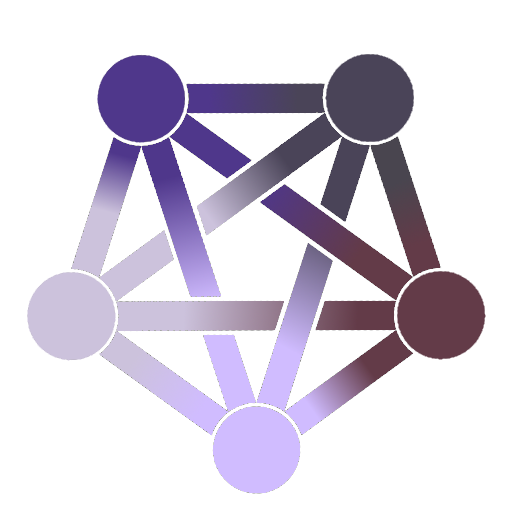What’s your evidence, Richard Easton??!?

Our mother who art in WiFi
Thy beacon come
Thou handshake be done
In ac as in 802.11
ACK

Let me tempt you with some SYN

SYN-ACK

RST

802.11ac
pfft gtfo of here we’re gearing up for a war.
LAN SENSING WALL PENETRATING XRAYS BABY! GOOOO 802.11bf
coming soon to an ISP near you



To be fair, I’d be skeptical if you told me Andy Griffith was the father of 3D printing.
Though I’d google it instead of asking for evidence first.

Note that this frequency hopping is no longer used in most WiFi networks today. It is, however, critical to classic Bluetooth, and BLE still somewhat uses it. I have no idea how it’s related to GPS.

Time splitting is just lazy frequency hopping, change my mind

Can two devices transmit at exactly the same time with time splitting?

From a human perspective, yes, that’s exactly what it does
If you want to get pedantic about the technical details, it’s not time splitting if you’re not splitting the time…

Technically speaking, isn’t differentiating between any two things pedantic? For example the moon, and chocolate, both are things. If you don’t want to get pedantic about it.

What I mean is if you don’t slice time into slots, you’re not using time slicing. It doesn’t make sense to talk about time slicing at all anymore
Two devices can transmit at the same time with all sorts of setups, even on the same frequency. And it’s not inaccurate to describe time slicing as “a method to allow multiple devices to transmit and receive simultaneously”
The question isn’t valid. Being truly pedantic would be pointing out that any number of devices can transmit at the same time, you didn’t say the messages would be received

Great to recognise this invention.
I was surprised by the choice of ‘Mother of Wi-Fi’ though - Wi-Fi hasn’t used ‘frequency hopping’ as such since 802.11b was released back in 1999 - so very few people will have ever used frequency-hopping Wi-Fi.
GPS only uses it in some extreme cases I think, but I’m not an expert.
However, Bluetooth absolutely does depend on it to function in most situations, so ‘Mother of Bluetooth’ might have been more appropriate.

So her invention isn’t used for Wifi now, but was used in the initial design of it? You might even say she helped give birth to it…

I guess my point is that it isn’t a particularly important part of the design of Wi-Fi - they included it in the very first iteration in 1997 and realised by 1999 they didn’t need it. Therefore Wi-Fi would likely have been born regardless of the invention; Bluetooth would not.

It goes to show that being a good actress doesn’t mean that you can’t also be good at tech, even if you don’t like to to brag about it.

It’s a brief five-minute Google search for me, but it seems that everyone has problems with both reading comprehension and/or causality evaluation.
I think it’s great that such a patent exists and that the technology was invented by her. Yet, even checking the frequency-hopping spread spectrum page on Wikipedia shows that it was only one invention in the long series of discoveries and technologies, which was neither the first, nor the most crucial of them, and this particular option seems to be one of the sources of inspiration for later technologies (along with a bunch of predecessors).
The rest of the criticisms regarding the choice of Wi-Fi over Bluetooth is already mentioned in the comments of others.
I really don’t want to minimise the contribution of an individual towards the development of sophisticated technologies, and I have zero qualms about this individual being a woman, I just think that the presentation oversells the achievement which might cause additional mockery from those who do think that women (and actresses at that!) have no business in anything serious.
What I actually find impressive, however, is that a woman, at the time where women’s rights were far from what they are today (just read about her first marriage, that must have been hard), could be both an actress, an inventor, a producer, all while leading quite a bitter life it seems. Not many can boast that.
I guess where I’m going with that is that she, as many others, may be best praised as an example of a complex person that had many achievements as well as many hardships. Using her as a basis of “Didn’t think an actress could do something worthwhile? Gotcha!” statement seems a bit shallow.
edit: However, since this post showed me that a person like Hedy Lamarr has existed in the first place (yeah, I’m not well-versed in mid-20 century American culture, sorry), and interested me (and likely a bunch of others) enough to Google her biography, I’d say it’s a net positive regardless.

Don’t try and oversell “famous woman does tech thing”. Try and and make people aware of the women who actually did really cool tech things. Marie Curie was a bad ass

I can 100% agree with that. Sadly She often gets forgotten.

Woman make thing!? Me no likely! Woke lie!
Fucking troglodytes.

There are plenty of women in STEM who deserve more recognition. Lise Meitner, discovered nuclear fission. Gladys West, came up with the theory that laid the groundwork for GPS. Grace Hopper, inventor of the program linker, without which modern software development would be impossible. Ada Lovelace, arguably the first programmer ever. But calling a woman whose name is one of two on a patent that furthered the development of a radio communication technique originally devised 40 years earlier by Nikola Tesla which Wi-Fi no longer uses “the mother of Wi-Fi” and putting her on a pedestal just because she’s a woman, parading her (and only her) around every Women’s History Month, and calling anyone who claims she didn’t actually invent Wi-Fi (because she died around the time of its creation) a “troglodyte” is not a good look.

Seems to be more than that to his question though
https://lemmy.world/comment/9701067
Plus the child comment seems relevant

Calling Hedy Lamarr “the Mother of Wifi” because she invented FHSS is like calling E. A. Johnson, who invented the first capacitive touchscreen in 1965, “the Father of the iPhone”.

i’m pretty comfortable with calling him that. capacitive touchscreens are a big deal sounds like he deserves the praise.

Capacitive touchscreens are a big deal but it kind of minimizes the work of the other technology that goes into a smartphone, like wireless internet, low power mobile CPUs capable of 3D graphics, lithium-ion battery packs, etc., to say nothing of the design engineers that worked on the exterior, the hardware, and the operating system and deserve credit for the iPhone way more than he does. Crediting the holder of a patent from over 40 years before the iPhone hit the market with the creation of the iPhone is stretching the truth at best.

children generally are able to have multiple parents.
if i give credit to Alice for being Bobby’s mother, i’m not minimizing the parenthood of any of Bobby’s other parents. just giving credit where due.
i would not hesitate to give a couple dozen people the title of father/mother/parent of the iPhone. seems quite appropriate and fair.

The headcrab Kleiner keeps as a pet in HL2 was named after her!
Whoa, cool! (Huge fan of the games here and didn’t know that)
https://patents.google.com/patent/US2292387A/en
For anyone else curious about this patent.

Maybe an ancestor of wifi, but CSIRO invented wifi. https://www.csiro.au/en/research/technology-space/it/wireless-lan

Okay, well, I’m a network professional with a specialty in wireless and a keen interest in historical wireless networking, and “non-standard” stuff is also quite interesting. I’m no Richard Easton.
I want to start with a disclaimer, by no means would I, nor should I be interpreted to be saying or implying that any contribution, regardless of source, isn’t valuable. Whether it comes from a woman, or man, white, black, or any color in-between, non-binary, gay, bi, trans, whatever. The contributor is valuable and their contribution is always valued.
That being said, FHSS, has its uses, and it’s been used in wireless. It’s a valid technology that should be recognised as such. As with many things, it wasn’t a singular effort, and nobody should imply otherwise.
As others have pointed out, the most commonly known technology which employs FHSS is Bluetooth; and trust me, trying to track down issues caused by BT interference is a nightmare because of it. Generally I avoid the problem by not using the 2.4ghz ISM band as much as possible, but I digress.
For those saying it’s not part of 802.11, it actually is. It’s an old part of the protocol which has long since been replaced and it is considered obsolete by the IEEE 802.11 group.
However, in the 802.11 protocol, sometimes called 802.11 prime (Wikipedia calls it “legacy”), it states: “[802.11] specified two raw data rates of 1 and 2 megabits per second (Mbit/s) to be transmitted via infrared (IR) signals or by either frequency hopping or direct-sequence spread spectrum (DSSS) in the Industrial Scientific Medical frequency band at 2.4 GHz.” https://en.wikipedia.org/wiki/IEEE_802.11_(legacy_mode)
All I want to really add, is that networking is a team sport. If companies and people didn’t work together to make it function, then it wouldn’t work.
Only by collaborating and working together towards improvement and an increase in the ability of the technology to work across all platforms, vendors, manufacturers, and devices, can we get it to function at all. This fact is as true now as it was when FHSS was invented. Everyone needs to work together in order to make any real progress. Otherwise, all of our wifi stuff would “speak” different languages, and nothing outside of a single companies product line, would work with anything else.
Everyone’s contributions have helped wifi get to it’s current state, and that should never be forgotten.

Wifi doesn’t use frequency hopping. That’s bluetooth.

Blue check…
much verified
